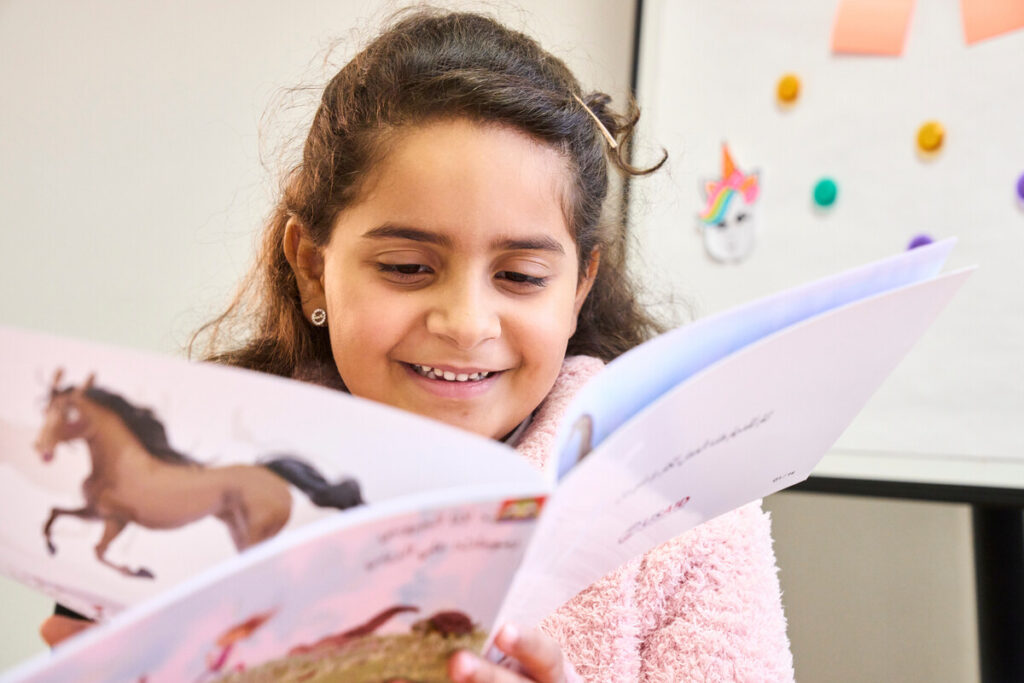The importance of co–creating in curriculum development
Education development practitioners grapple with how to shift the educational landscape while still ensuring students’ needs are met in and out of the classroom.
While there are promising interventions making a difference with thoughtful, localized programming, there are still gaps between how theoretical and aspirational frameworks are applied in real classrooms. A co-creation approach involving local stakeholders can help bridge these gaps.

What does co-creation mean?
Co-creation is a collaborative approach that considers the interests and voices of all stakeholders. In education, this means not only contextualizing but also creating partnerships to serve the learners and their communities.
Projects with curriculum development components are good examples of co-creation. One of the first questions to ask in co-creation of curricular materials is whether schools, teachers, parents and students are ready for new and different approaches to curriculum.
The second question is who decides what is best for this educational system versus another. Learning more about the various components and types of curriculum development may answer these questions.
Curriculum unpacked
There are four common components of a curriculum, all of which should be kept in mind when taking a co-creation approach to the development of teaching and learning materials.
- Intended curriculum — The material that ministries and education policymakers design to determine learning experience goals. This especially pertains to textbooks and teaching and learning materials.
- Implemented curriculum — What is taught in the classroom and the way it is conveyed to students through instructional tools and methods (pedagogy).
- Attained curriculum — What students actually learn and get out of the curriculum.
- Hidden curriculum — The values and beliefs underlying the intended and implemented curriculum.
At Creative, we take a practical, localized approach to curriculum development that involves a co-creation process. Our local and international staff collaborate and negotiate the first three components of the curriculum alongside a group of experts from universities and education ministries.
In some projects, we focus on the intended curriculum as part of a system strengthening approach. In others, the focus is on the implemented and attained curriculum. The fourth component, the hidden curriculum, requires further research and follow-up on the impact of the curriculum on the new generation.
At the core of this approach is a co-creation process that makes local partners, including policymakers and practitioners, part of the process.
Lessons learned from the field
I witnessed the entire co-creation process firsthand on one of the projects I support in the MENA region, from the development of the intended curriculum to the attainment of goals by teachers and students.
Working with USAID’s Jordan Technical Assistance Program (TAP) team, I first saw the intended curriculum developed, and I participated in the co-creation process. A group of teachers, ministry officials, TAP content experts and Creative technical advisors drafted, reviewed and provided feedback on the curriculum.
I later saw the implemented curriculum through group work when I visited classrooms implementing a remedial support program co-created with local stakeholders. For example, some of the teaching guidelines encouraged teachers to form cooperative groups in the classroom so that students at diverse levels can work together. Even if the final lesson was not perfect, it demonstrated promising progress.
I witnessed that the intended curriculum does not always lead to an implemented curriculum, but the co-creation process bridges the gap between them to maximize the potential for intersection.
The attained curriculum was harder to observe over a short time, especially because assessments to check for learning were not implemented over the course of the lesson. However, the hidden curriculum was present throughout the process to inform the learning.
One hidden curriculum message was that strong students could function as a support system for “weak” students in remedial education. The collaborative nature of the group work seemed to help all levels of students feel comfortable in these remedial classes.
By involving local stakeholders and policymakers in the co-creation process, development and local practitioners can build out each component of curricula to ensure that students’ needs are met, from the theoretical to the practical.
Ilham Nasser is the MENA Senior Technical Advisor for Creative’s Education Division.

